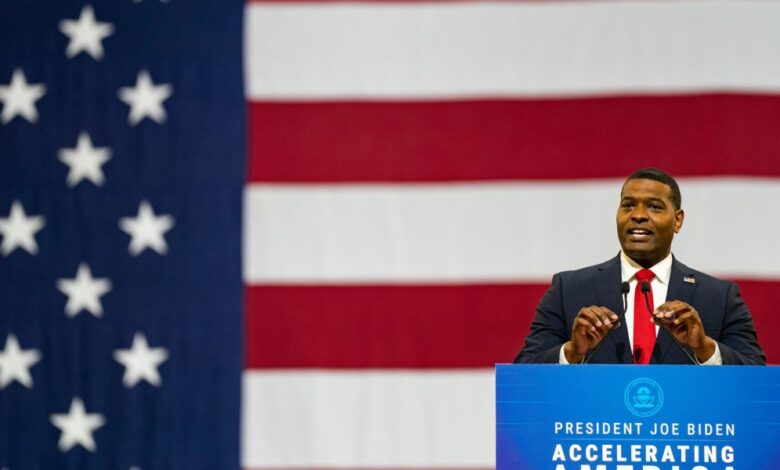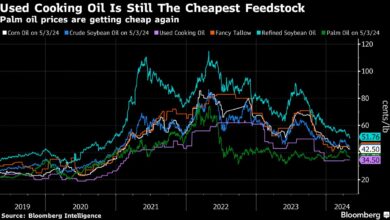EPA inks ‘single most important climate regulation in the history of the country’


Automakers will be forced to significantly curtail emissions over the next decade, according to an EPA rule finalized on Wednesday—and experts say that it’s setting the pace for more climate action to come from the Biden administration.
“This is a great day for climate,” Sierra Club Director Katherine García told Fortune. “A big focus of ours was the timing of these standards. We’re particularly pleased to see that they come out in March, because automakers need time to prepare and to accomplish this shift.”
Part of what makes the rule so important is how it fits into what’s becoming a wave of coordinated climate legislation unveiled by multiple federal agencies as President Biden nears the end of his term. (That timing is no accident: the Biden administration is likely trying to wrap up new rulemaking soon. If Republicans win control of Congress this fall, they could repeal any final rules issued by agencies within 60 days of the end of the session through the Congressional Review Act, as originally reported by Politico.)
The Biden administration initially proposed a new rule imposing strict emissions limits last April, which would have required that two-thirds of all new vehicles sold be electric by 2032. But automakers and dealers protested that those goals were unrealistic, given that EVs still account for less than 10% of sales.
The EPA backed off somewhat in its final version of the rule, which gives carmakers more leeway to slow down their EV transition between 2027 and 2029. However, it still reaches the same goal of reducing greenhouse gas emissions from sedans, SUVs and other light-duty vehicles by 2032. The EPA estimates that the rule will eliminate 7.2 billion tons of CO2 emissions through 2055.
“[The] EPA is finalizing the same standard proposed for model year 2032 while allowing additional time for the auto sector to scale up clean vehicle manufacturing supply chains in the first three years covered by the rule,” reads the EPA’s press release.
Automakers applauded the new rule, which buys them more time to shift production to EVs and lean on plug-in hybrids in the meantime. “Moderating the pace of EV adoption in 2027, 2028, 2029 and 2030 was the right call because it prioritizes more reasonable electrification targets in the next few (very critical) years of the EV transition, wrote John Bozzella, President and CEO, Alliance for Automotive Innovation, in a press release. “These adjusted EV targets—still a stretch goal—should give the market and supply chains a chance to catch up.”
Former Biden administration climate policy advisor and current Tesla policy VP Rohan Patel argued in a post on X that the rule should have been stricter. “The proposal was ambitious/achievable. The finalized rules will be less ambitious and therefore even more achievable, despite what you’ll hear from many in legacy auto through their trade associations,” he wrote.
But despite the fact that the EPA extended the timeline after pressure from auto industry representatives, environmental groups are still heralding the rule as a win. In a call organized by the Environmental Defense Fund, former EPA official Margo Oge called the rule the “single most important climate regulation in the history of the country.”
When it rains, it pours
The stricter emissions requirements from the EPA were one part of a coordinated slew of climate-related rules regulators issued.
Yesterday, the Department of Energy finalized an update to the process it uses to calculate equivalent mileage for electric vehicles, handing environmental organizations a win by requiring automakers to step up EV production to comply with emissions targets. The Department of Transportation is expected to roll out updated fuel economy standards, called CAFE standards, in the coming months, which will cut emissions even more. And García told Fortune that EPA standards for heavy-duty trucks and 18-wheelers, which weren’t included in today’s rule, have already been finalized, gone through the OMB and should be rolled out soon.
“[The rule] is also coupled with the incredible investments from the [Bipartisan Infrastructure Law] and the Inflation Reduction Act,” García said. “Altogether, we’re really seeing this as a package in order to take climate action and to improve public health.”
The new rule doesn’t impose outright bans on gas-powered vehicles: instead, it sets emissions benchmarks for carmakers’ entire fleets, leaving their EV strategy up to them. That helped placate automakers who were against a flat ban.
“While the later-year targets remain aggressive, the final rule improves on the proposal by better reflecting the expected trajectory of market demand and enabling infrastructure,” wrote a spokesperson for Stellantis, the company that makes cars under brands including Chrysler and Dodge, in a statement to Fortune. “It is critical that forthcoming rules align with this proposal so that U.S. manufacturers can effectively comply with a single set of rules.”




